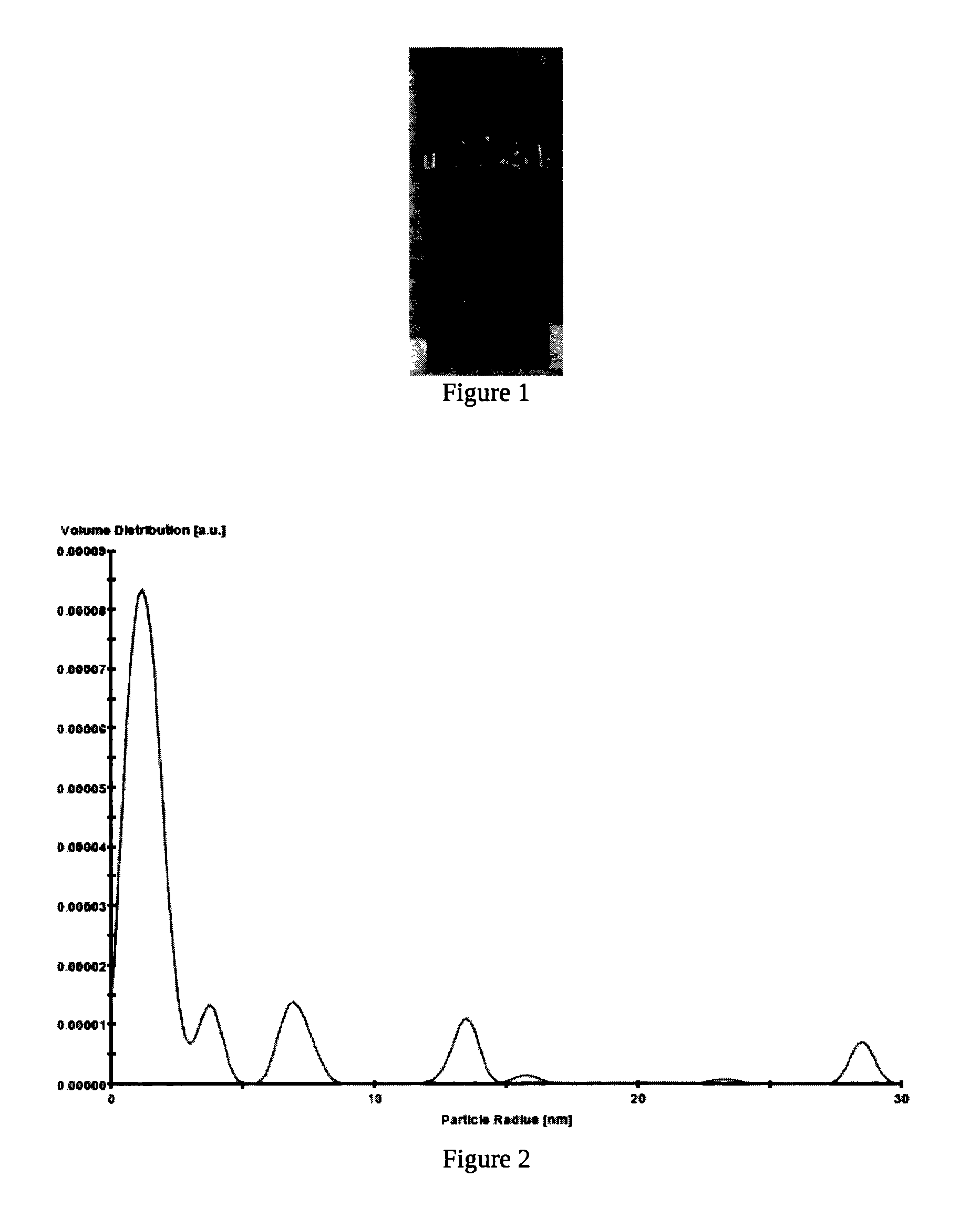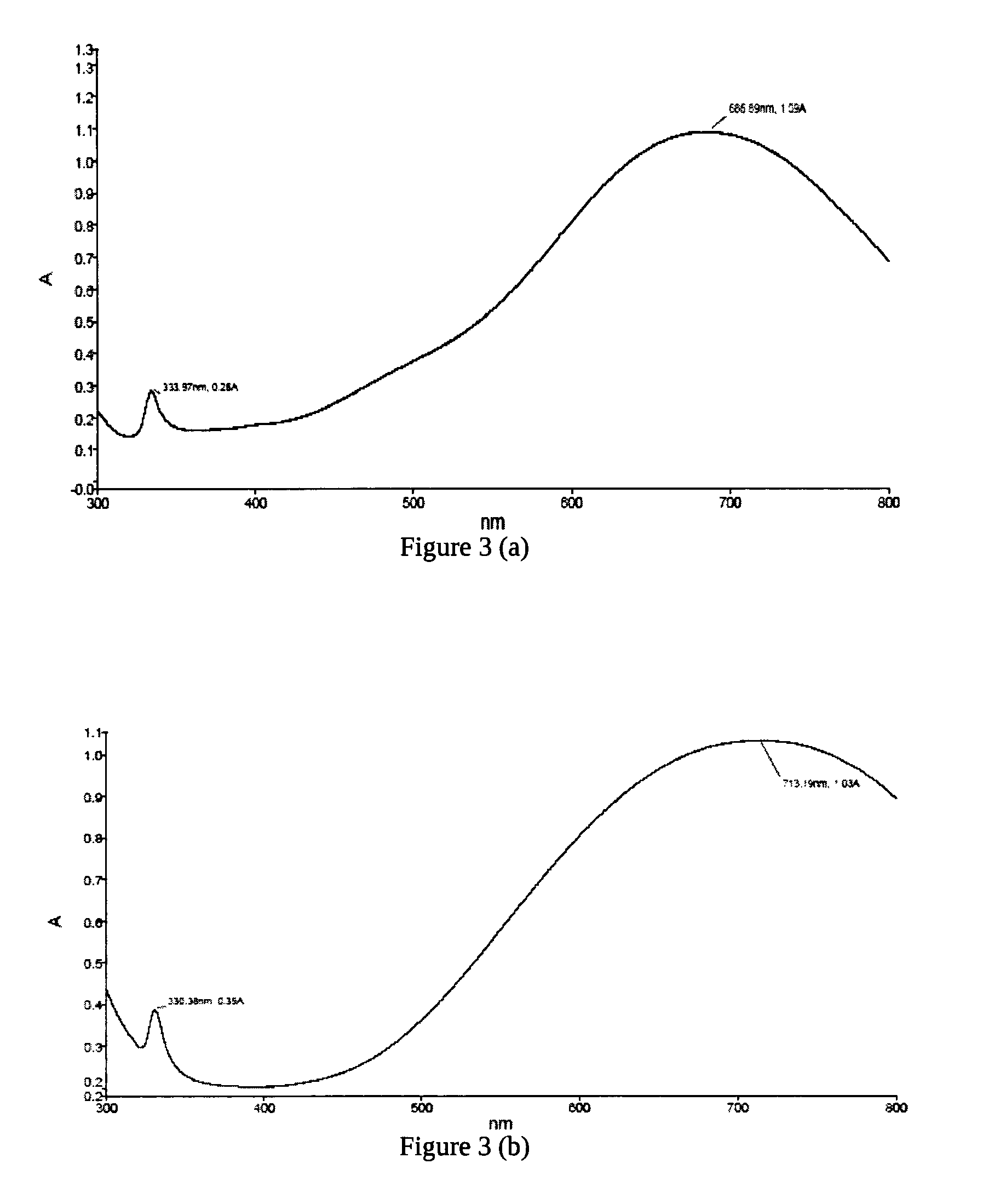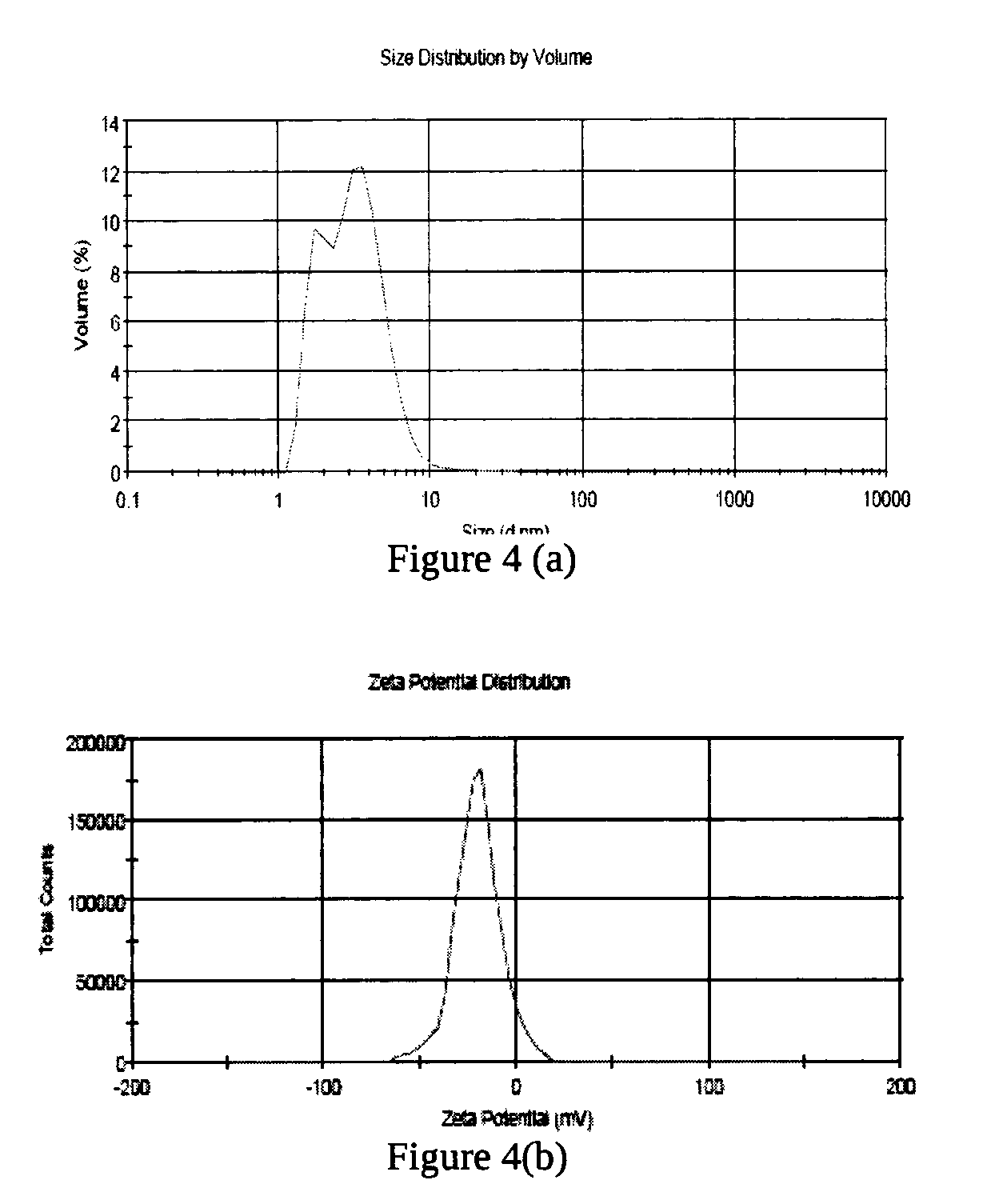Blue coloured aqueous dispersion of silver nanoparticles a process for preparation and compositions thereof
a silver nanoparticle and aqueous dispersion technology, applied in the field of blue coloured aqueous dispersion of silver nanoparticles and process, can solve the problems of poor aesthetics in terms of lower whiteness index or higher yellowness index, non-durability of nanosilver based finishes available in prior art, and high concentration. achieve the effect of stable exposur
- Summary
- Abstract
- Description
- Claims
- Application Information
AI Technical Summary
Benefits of technology
Problems solved by technology
Method used
Image
Examples
example 1
Synthesis of Aqueous Dispersion of Blue Coloured Silver Nanoparticles
[0113]In 100 ml of deionized water, 0.01 mMole of AgNO3 was added. To this, 0.035 mMole of Poly(vinyl pyrrolidone) of number average molecular weight of 40,000 was mixed. Then 0.092 mMole of trisodium citrate and 2.0 mMole of H2O2 were added stepwise and mixed at the room temperature at 20° C. Then the temperature of the mixture was raised to 65° C. and then 0.184 mMoles of sodium borohydride was added to produce blue coloured aqueous dispersion of Ag nanoparticles.
example 2
[0114]In 100 ml of deionized water, 0.01 mMole of AgNO3 was taken in a beaker. 0.05 mMole of Poly(vinyl pyrrolidone) of number average molecular weight of 40,000 was mixed with it. Trisodium citrate (0.090 mMole) and H2O2 (2.0 mMole) were added stepwise and mixed at the room temperature at 40° C. Then the temperature of the mixture was raised to 60° C. and then 0.15 mMole of sodium borohydride was added to produce blue coloured aqueous dispersion of Ag nanoparticles.
example 3
Application of Blue Coloured Aqueous Dispersion of Silver Nanodispersion on Textile Substrate
[0115]1 wt % of blue coloured aqueous dispersion produced in Example 1 was taken in DI water. To this 0.1 wt % SDS was added and stirred well. Fabric dipped and padded with 80-100% expression (% weight of liquid based on the dry weight of fabric). Fabric was dried at 80 degree C. for 5 min and cured at 150 degree C. for 3 min to get durable antimicrobial finish with out binder.
PUM
| Property | Measurement | Unit |
|---|---|---|
| equivalent diameter | aaaaa | aaaaa |
| diameter | aaaaa | aaaaa |
| time | aaaaa | aaaaa |
Abstract
Description
Claims
Application Information
 Login to View More
Login to View More - R&D
- Intellectual Property
- Life Sciences
- Materials
- Tech Scout
- Unparalleled Data Quality
- Higher Quality Content
- 60% Fewer Hallucinations
Browse by: Latest US Patents, China's latest patents, Technical Efficacy Thesaurus, Application Domain, Technology Topic, Popular Technical Reports.
© 2025 PatSnap. All rights reserved.Legal|Privacy policy|Modern Slavery Act Transparency Statement|Sitemap|About US| Contact US: help@patsnap.com



